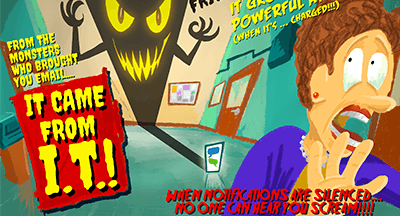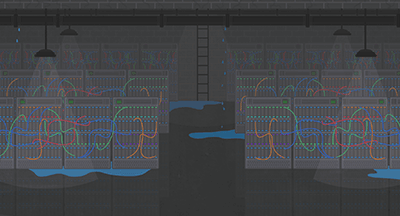
The wonderful world of edtech is one of universal access, from the youngest pre-readers to staff and administrators to families and parents. Here’s a quick list of edtech lingo translated into plain English.
1:1 (say “one to one”)
A program in many K12 schools that matches students with a device (usually a Chromebook but not always) they can use during the school year and academic breaks to access edtech programs.AI: artificial intelligence
A popular example is ChatGPT, but this can also extend to tools such as Grammarly, Siri, and Google Assistant. These models use algorithms to produce answers to prompts users write.API: application programming interface
A protocol that makes data fields available from one system in a format other systems can use. The receiving system can then extract pure data and load it in the context of its own interface. For example, if grades are entered into a learning management system (LMS), the data is seamlessly passed to the student information system (SIS) bypassing the manual dual entry step.CEDS: Common Education Data Standards
The language data interoperability tools are built upon. Common Education Data Standards give edtech vendors and users a common vocabulary to use to create data frameworks that allow different systems to pass information securely and seamlessly between them.COPPA: Children’s Online Privacy Protection Act
A set of federal requirements designed to protect children under 13 years old, established in 1998. From the Federal Trade Commission: “COPPA imposes certain requirements on operators of websites or online services directed to children under 13 years of age.” It bars websites from delivering material considered harmful to children and from collecting data without parental consent..CSV: comma-separated values (file format)
A common file type used to export data from one database for upload to another database.Ed-Fi
A set of rules that allows edtech systems to connect and share data. Two previously disconnected systems powered by Ed-Fi (whether an SIS, LMS, assessment software, etc.) can connect through this shared language. This eliminates the need for dual data entry and makes data management and analysis easier.ERP: Enterprise resource planning
Used to manage business processes and operations for finance, human resources, procurement, distribution, and more. An ERP system can help save time by eliminating manual calculations and data entry.FERPA: Family Educational Rights and Privacy Act
A federal law that protects students’ privacy regarding education records. In short, students and families have a right to access their school records and they have a right to keep records private except for educators who have a legitimate educational interest (e.g., a current teacher or administrator, but not a teacher who does not directly interact with the student). Get more details about the rights and responsibilities.GUI: Graphical user interface (say “gooey”)
An edtech solution with fewer text menus and more visuals for a more intuitive and accessible user experience.HIPAA: Health Insurance Privacy and Accountability Act
A federal rule that requires private healthcare information to be kept private and secure. Some K12 schools have a responsibility to keep medical information private and secure under this law.HTTPS: hypertext transfer protocol secure
Aclue in the URL the website is safer, since it uses secure encryption.IT: Information technology
A set of related fields including computer and software systems, programming, and data processing and storage. Fun fact: the term first appeared in a 1958 article published in the Harvard Business Review.LMS: Learning management system
Often combines assignments and recordkeeping. Students may complete assignments and teachers grade them. An LMS should integrate seamlessly with a student information system capable of maintaining student records.MTSS: Multi-tiered system of supports
Helps educators support students in need of behavioral or academic help to achieve grade-level skills. Think of it as the sum of PBIS + RTI.PBIS: Positive behavior interventions and supports
A framework to help recognize both behavior needs and outstanding behavior to establish a positive school culture..PDF: Portable document format
The OG (that’s original gangster) file format for sharing any type of information with anyone. Most devices can open PDFs, which makes them easy to share. PDFs are difficult to edit, which makes it hard to tamper with the information.RTI: Response to intervention
A method of providing different levels of support for students to move them toward grade-level academic skills. Each tier provides more intensive intervention strategies according to the student’s needs. Students move from tier to tier as they improve or experience setbacks.SIS: Student information system
Houses student data including demographics, health, grades, schedules, behavior management, and more. An SIS should integrate seamlessly with other software solutions. For example, grades can flow from an LMS can flow grades into an SIS.SMS: Student management system; short message service
Two different definitions for SMS include student management system (similar to an SIS) and short message service. We commonly call SMS messages “text messages.”SSO: Single sign-on
It provides a secure way to sign on to many different software systems using one set of credentials.STEAM: Science, technology, engineering, art, and mathematics
You’ve probably heard of its cousin STEM, but STEAM add art to the science mix. This encourages elastic thinking and helps make the more rigid engineering and math more accessible for more students.UI: User interface
The part of the software the user sees and interacts with.URL: Uniform resource locator
The website address you type into a browser window.UX: User experience
How users interact with an edtech solution.Which edtech acronyms leave you scratching your head? Subscribe and gain more edtech insight each month.
WHAT'S NEXT FOR YOUR EDTECH? The right combo of tools & support retains staff and serves students better. We'd love to help. Visit skyward.com/get-started to learn more.

|
Erin Werra Blogger, Researcher, and Edvocate |
Erin Werra is a content writer and strategist at Skyward’s Advancing K12 blog. Her writing about K12 edtech, data, security, social-emotional learning, and leadership has appeared in THE Journal, District Administration, eSchool News, and more. She enjoys puzzling over details to make K12 edtech info accessible for all. Outside of edtech, she’s waxing poetic about motherhood, personality traits, and self-growth.




